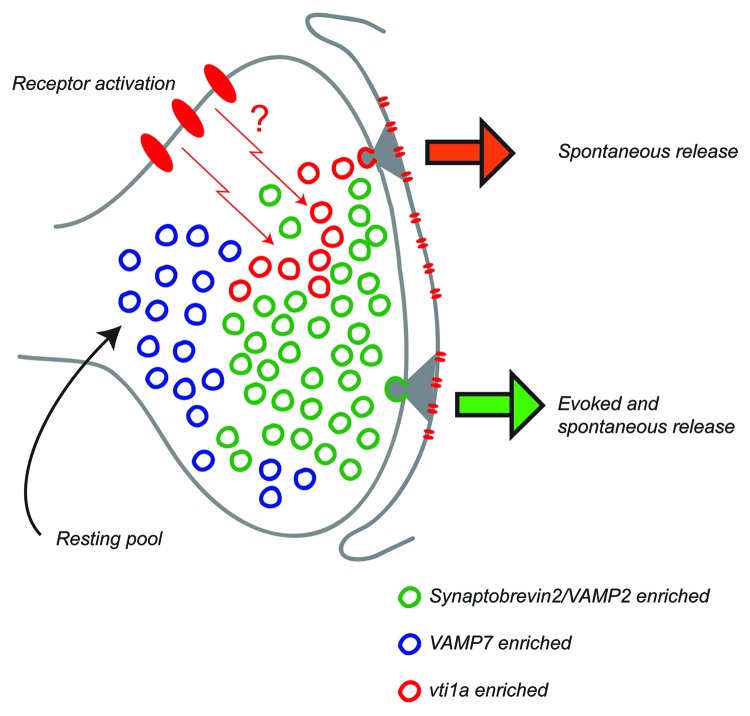Figure 1. This cartoon depicts an emerging model on the distributions of vesicular SNAREs syb2, vti1a and VAMP7 among synaptic vesicle pools. At central synapses, syb2 is the predominant vesicular SNARE that ensures rapid execution of synaptic vesicle fusion. However, loss-of-function studies of syb2 suggest that a parallel pathway involving non-canonical SNAREs may mediate fusion and recycling of a subset of vesicles. Recent studies revealed that both vti1a and VAMP7 could fulfill this role and specifically traffic at rest. Vti1a possesses a more prominent intracellular pool and more robust trafficking in the absence of activity compared with VAMP7. On the other hand, vesicles containing vti1a or VAMP7 show relatively reluctant responses to action potential evoked stimulation compared with swift mobilization of syb2-containing vesicles during evoked neurotransmission. Given their relative reluctance for mobilization VAMP7 containing vesicles could constitute at least a fraction of the vesicles within the resting pool. The co-existence of molecularly distinct synaptic vesicle populations with different fusion properties may allow certain regulatory pathways to impact a particular type of neurotransmission selectively, thereby triggering a specific cellular response. In this way, the nature of presynaptic activity can determine the impact of downstream postsynaptic signaling events.

An official website of the United States government
Here's how you know
Official websites use .gov
A
.gov website belongs to an official
government organization in the United States.
Secure .gov websites use HTTPS
A lock (
) or https:// means you've safely
connected to the .gov website. Share sensitive
information only on official, secure websites.
